| Botanical Name |
|
| Family |
Crassulaceae - The crassula family. |
| Pronunciation |
KRASS-yoo-la STREE-ee-eye |
| Common Name(s) |
English: Pondoland Crassula
|
| Plant Group |
- Ground Cover A plant with a low-growing, spreading habit, grown specifically to cover the ground.
- Succulent A plant having fleshy stems or leaves often adapted to dry conditions.
|
| Plant Size |
- Small to Medium
| Tree | 8m to 15m |
| Shrub | 75cm to 1m |
| Perennial/ground cover | 20cm to 40cm |
| Bulb | 30cm to 40cm |
| Succulent | 20cm to 40cm |
|
| Position |
- Canopy Shade Canopy shade is found below closely grown trees where some light filters through. Ideal for the protection of herbaceous plants.
- Deep / Full Shade Shade below spreading evergreen trees where sun's rays are unable to penetrate the canopy at any time. For light sensitive plants
- Light or Dappled Shade Found below trees with sparse, open foliage. Ideal for the protection of herbaceous plants.
- Partial Shade The area is in shade for part of the day and in full sun for part of the day.
|
| General Information |
- Drought Tolerance: Moderate The plant is moderately adapted to arid conditions and can survive short periods of drought and high temperatures without extra water.
- Evergreen Plants that have leaves all year round.
- Frost: Tender A plant that will not survive any frost or low winter temperatures.
- Water Moderate These plants will need some extra watering compared to water-wise plants. Plant them together, in at least some shade and in a convenient proximity to the house so that grey water can be utilised during times of drought.
|
| Specific Information |
Crassula streyi is found naturally on shady rock ledges and moist forest banks, always close to water. The leaves are oval, green above and purplish-red below. Grown in the sun, it is less vigorous and the leaves become paler, the maroon turning to coppery bronze. It makes a striking ground cover for shady areas, grows very easily and is easy to propagate. It tolerates dry shade although it is then less lush. It's growth habit in the garden is very much like that of Crassula multicava, but I have found it far less invasive.
According to the Red list of South African Plants this species is rare and known from only 5 sites in a specific but inaccessible habitat in Pondoland.
|
| Ad Break |
|
| Flowers |
| Description |
dainty sprays of tiny white star-shaped flowers
|
| Season |
- Spring Plants will seldom bloom for the entire season as given in the list, but should flower during a period within these parameters.
|
| Colour |
|
| Growth Rate |
- Fast Specifying growth rate can be very misleading as there is considerable variation of growth rate depending on type and species of plant, available water, supplementary feeding, mulching and general care, as well as the plants suitability and adaptability to the garden environment.
|
| Plant Uses |
- Attracts bees, butterflies or other insects This plant attracts insects which can be food for birds or other creatures in your garden.
- Border A strip of ground, at the edge of a driveway or path in which ornamental plants or shrubs are planted.
- Edging A low growing plant that provides softness or definition to the edges of a bed or walkway.
- Filler Either a fast growing tree or shrub used temporarily to fill in an area while the permanent plants grow to a desired size, or a plant used to fill gaps in borders or beds.
- Ground Cover Low-lying plants that spread fast, require minimal maintenance, and cover large expanses or bare areas between bulbs or shrubs. They provide protection from erosion and drought and improve the visual appearance of the garden.
- Mass Planting Plants useful for filling a large area with just one or a few kinds of plants spaced close together. Creates a bold, dramatic effect and to reduces maintenance.
- Rock Garden An area constructed of larger rocks, arranged naturally, to emphasise the use of stones as a main element. Generally plants used do not need a lot of care.
- Stabilize Banks Plant is used to prevent soil erosion because their roots will form a mat that stabilizes the soil and keeps it from washing away in heavy rains.
- Suitable for coastal gardens Plants adapted to dry, sandy soil, forceful wind, limited rainfall and intense sunlight.
- Wild Garden An indigenous garden planted for the benefit of wildlife and birds. Provides food, water, a variety of mini-biomes and no poisonous chemicals are used.
|
| Distribution and Habitat |
in Pondoland, on the border of the Eastern Cape and KwaZulu-Natal, on sandstone cliffs in deep shade of coastal forests
|
| Planting Suggestions |
This crassula grows best in a moist, shady place. With a bit of compost added and a little extra watering, Crassula streyi will grow and spread very quickly.
|
| Medicinal Uses |
|
| Ad Break |
|


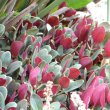

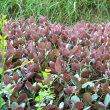
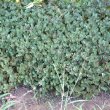
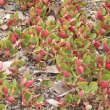
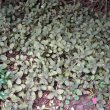
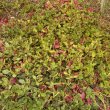
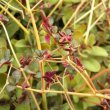


Comments
crassula streyi
I have it growing here in Santa Barbara outside all year. It is currently flowering. It sets quite a bit of seed so I keep it in a pot so escapes are minimized.
Crassula streyi
Hi Jim
Thanks for your comment.
So many less known (in South Africa) succulents are grown in the US. For some species the only information I can get about them is from American websites.
You are probably wise to prevent this plant from escaping. Although I haven't found it as invasive as Crassula multicava, I should imagine that under the right conditions it could become quite a pest. I am always amazed at how many South African plants have become invaders in California and Florida, as well as in Australia and the Mediterranean countries.
Kind regards
Lorraine
Photos show Crassula
Photos show Crassula multicava, and not C. streyi.
Crassula multicava versus Crassula streyi
Hi Thomas
The above photos are definitely Crassula streyi. Crassula multicava has a slightly more rounded leaf and is green on both the upper and lower sides of the leaf. Crassula streyi has a more oval to slightly pointed leaf with a reddish to maroon underleaf, while the upper leaf is a darker green than in C. multicava.
I have, however, seen sites from the USA, Germany and even one in South Africa, that call this plant C. multicava 'Red' or 'Ruby'. This is an error arising from a lack of research. It is a name presumably created by persons who have assumed that because the plants are so similar, they must be a variation of the same plant.
There is no such thing as a Crassula multicava with a red leaf - not even a hybrid.
There are only two subspecies of Crassula multicava (see: http://redlist.sanbi.org/genus.php?genus=3835): namely,
subsp. multicava, with pink flowers, and
subsp. floribunda with white flowers, both of which have green leaves.
This in only one of many incorrectly identified species that I have seen on overseas websites, especially among succulents such as Crassula, Haworthia, Euphorbia and Cotyledons.
Regards
Lorraine
Discuss this plant
Share knowledge, ask a question or give an experience.